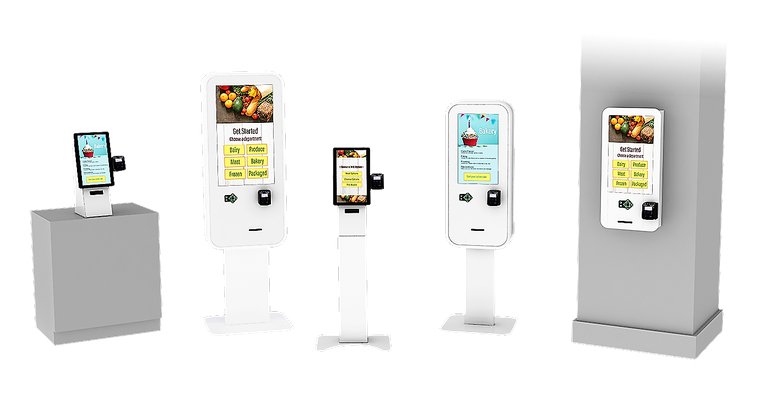
Much has been written recently about the mounting disruption grocers face as they compete with e-commerce options. And while many factors will determine the success of supermarkets in the future grocery landscape, investing in customer service is an undeniable way to secure a competitive edge in the market.
Today’s customers expect more from physical stores, and self-service technologies can provide the kind of consumer experience that prompts shopper loyalty.
Here are three ways self-service kiosks can benefit supermarkets as they look to the future.
1. Reduce wait at deli and meat counters
We’ve all been at the back of the deli counter mob, silently tallying how many people are in front of us based on when we arrived. And don’t even get me started on that one late comer who always jumps the line. It’s enough to give even the most patient person a headache.
Further, these counters aren’t the most efficient for customers trying to get in and out quickly while they wait for an attendant’s attention or for the employee to finish fulfilling the order.
Imagine removing this friction point with a self-service kiosk that allows customers to place deli or meat orders and then continue with their shopping as it’s being assembled. Like a quick service restaurant, orders would be sent to a kitchen crew who can quickly focus on preparation. Not only does it improve productivity for customers, but more deli and meat attendants can be redeployed to expediting versus order taking.
Once done, the shopper simply returns to the counter to pick up his or her order.
And much like a fast food restaurant’s well-known phrase, “do you want fries with that,” grocery kiosk technology can also provide opportunities for upselling, leading to larger order tickets. Can you imagine a machine always remembering to suggest a customer add a deli salad to his half pound of ham order?
2. Wayfinding for hard-to-find products
Recently, my local grocer redesigned its store layout and I found myself on a five-minute hunt for olive oil. I couldn’t track down an employee, so I spent a good amount of time reading signage and aimlessly wandering from aisle to aisle.
When associates aren’t readily available, wayfinding can be an aggravating experience for shoppers who are unaccustomed to a store or having a difficult time finding an obscure ingredient.
Offering wayfinding kiosks at key places in a supermarket can alleviate the frustration of locating items and can also keep patrons from needing to ask employees who are often concentrated on tasks like stocking or cleaning.
And when not in use? Grocery stores can take advantage of the kiosk’s idle screen to promote weekly specials or rewards.
3. Simplify bakery orders
If you’ve ever ordered a custom cake for a kid’s birthday, you’ve likely encountered the bakery’s three-ring binder with laminated sheets of cake options. You might have also placed the order using a paper form.
Kiosks can eliminate the need for these oversized books and outdated order sheets.
First, kiosks allow for easy browsing, offering opportunities to replace physical albums with digital galleries displaying a grocer’s entire cake portfolio.
Second, self-service technology can prevent small mistakes that happen on write-in forms, like forgetting to fill out a crucial detail or leaving off a phone number. Kiosk software could also be set up to send an auto-email letting the customer know an order was received or that it’s ready for pick-up.
At the end of the day, a self-order kiosk in the bakery department offers the digital customer experience customers have come to expect.
With all the conveniences self-service kiosks provide, it’s no surprise many industries have found ways to implement the technology in their customer experience strategies. Grocery stores are no exception and can easily improve their patrons’ weekly shopping trips as well as the store’s own bottom line with the help of interactive kiosks.
